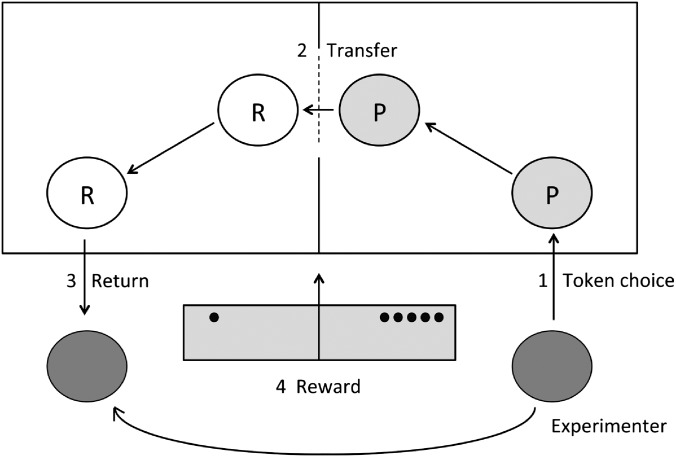Fig. 1.
Experimental setup for pairs of chimpanzees following a four-step sequence. Step 1: The proposer (P) is presented with a choice of two tokens, one representing an equal split of the rewards and the other representing an unequal split favoring the proposer. The proposer is free to select either token. Step 2: The proposer passes the selected token to the respondent (R) through a mesh panel. Step 3: The respondent either returns the token to the experimenter to accept the offer, drops the token, or does not return it for 30 s. Step 4: Six banana rewards are visibly divided on a tray in front of the chimpanzees according to the token selected. Here the dots represent an unequal 5:1 distribution of rewards in favor of the proposer. The tray is then pushed within reach of the chimpanzees so that each can collect its reward(s). Note that the experimental setup for children was similar, except that a commercially available baby gate was used to separate the participants and the experimenter.

